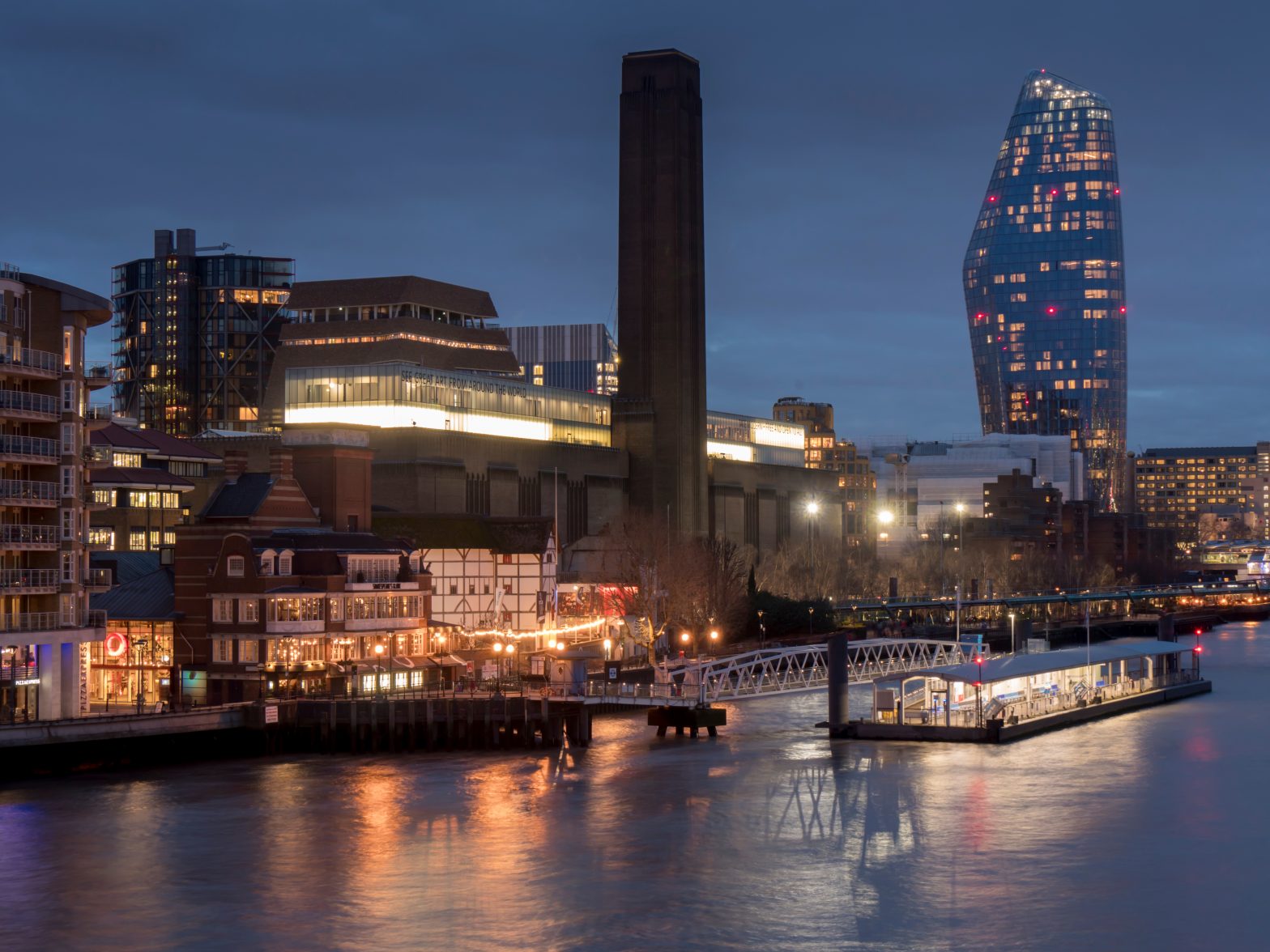In a high-profile case, the Supreme Court has ruled that the Tate Modern’s viewing platform violates the privacy of luxury flats located opposite the art gallery. Located in the heart of Central London, in 2020 the Tate Modern was listed as the 3rd most visited art gallery in the world, with around 5 ½ million visiting each year.
The gallery has a public viewing gallery on the top floor which allows visitors to see 360-degree panoramic views of London. Unfortunately, this means that for the claimants in this case, visitors to the viewing gallery are able to see straight into their living areas. According to the Supreme Court, this constituted an unacceptable level of intrusion.
So what does this case mean for privacy laws, and why did the Supreme Court come to the conclusion that it constituted a private nuisance? Keep reading to find out.
Background
The Tate Modern’s viewing gallery originally opened in 2016 and was swiftly followed by legal action from the Neo Bankside residents affected based on the common law of private nuisance. The viewing gallery is open from 10am until 5:30 pm from Sunday to Thursday, and 10am to 7pm on Fridays and Saturdays. However, the north and east sides can stay open until 10pm, with the whole gallery open until 10pm once a month. These hours have been shortened after previous complaints from the residents. Other measures taken by the Tate to address the concerns included asking visitors to stop taking photos of the properties opposite and putting up signs.
The claimants for this legal action are seeking an injunction which would require the Board of Trustees of the Tate Gallery to “prevent members of the public from viewing their flats from the relevant part of the viewing gallery walkway”. Alternatively, they are also seeking an award of damages.
Judges in both the High Court and the Court of Appeal had previously ruled against the flat-owners despite finding that the interiors of the flats drew significant interest from visitors to the Tate’s viewing gallery. This included people not just looking in, but also taking photographs and posting them on social media. In the initial trial, despite finding that the extent of the viewing into the claimants’ flats could in principle give rise to a claim for nuisance, it was found that this did not amount to a nuisance. The reason for this is that the judge found the use of the top floor of the Tate as a viewing gallery was reasonable, and also that there were two main factors which meant the claimants’ were responsible for their grievances.
1. They bought properties with glass walls
2. Remedial measures could be taken such as lowering blinds during the day or installing net curtains
On appeal the Court of Appeal found that the judge had applied the law incorrectly. Despite dismissing the appeal, they found that if the principles of common law nuisance were correctly applied to the facts of the case, the claim should succeed. The appeal was dismissed on the basis that “overlooking” cannot in law count as a nuisance. It is important to note that there is also no precedence for this in English law.
Judgment
The majority of the Supreme Court judges (3 out of 5) agreed with the Court of Appeal that the judge had incorrectly applied the law. However, they disagreed with the Court of Appeal in deciding that the law of nuisance does not cover such a case. They stated that the reason behind the lower courts dismissing the case could have been that they were reluctant to favour “a few wealthy property owners” over allowing the general public to have an unrestricted view of London.
One of the main tests applied by The Supreme Court was whether the viewing gallery “necessary for the common and ordinary use and occupation of the Tate’s land”. Lord Leggatt criticised the Court of Appeal for not applying such a test, and came to the conclusion that had it done so, it would have concluded that the Tate was not using its land in a “common and ordinary way, but in an exceptional manner”. Leggatt added that simply asking the claimants to put up curtains in order to prevent overlookers wrongly placed the responsibilities of avoiding a nuisance on the victim. He compared this with a noise complaint, stating that it would not be appropriate to simply ask someone to wear earplugs in such a situation.
In concluding that the Tate was liable in nuisance, Leggatt suggested that some form of remedy was required. However, he stated that this was not a matter for the Supreme Court, and that instead it should be up to the Chancery Division to decide on remedial action if the two parties cannot reach agreement on a solution.
Our thoughts
This is both a high-profile and important case which could have a significant impact on how other courts in England choose to interpret the law when it comes to privacy laws and overlooking. Some members of the public may have issues with the decision, determining that rich people who buy properties next to one of the world’s most visited museums should have little to complain about.
However, the Supreme Court made clear that the outcome was specific to the case itself. Nevertheless, it will be interesting to see whether the case leads to more claims around private nuisance and overlooking more specifically. In a city like London, with countless tall buildings in close proximity to each other, and space coming at a premium, it would be hardly surprising to see more cases of this kind. Whether it will have an impact on property developers will also be one to keep an eye out for.
Have questions about this article? Get in touch today!
Call us on 020 7928 0276, our phone lines are open and we will be taking calls from 9:30am to 6:00pm.
Email us on info@lisaslaw.co.uk.
Use the Ask Lisa function on our website. Simply enter your details and leave a message, we will get right back to you: https://lisaslaw.co.uk/ask-question/
Or, download our free app! You can launch an enquiry, scan over documents, check progress on your case and much more!




Thank you for your sharing. I am worried that I lack creative ideas. It is your article that makes me full of hope. Thank you. But, I have a question, can you help me?
Nice answer back in return of this difficulty with genuine arguments and
telling all concerning that.
You really make it appear really easy together with
your presentation but I find this matter to be really one thing that I think I would never understand.
It seems too complicated and very wide for me. I am looking ahead on your subsequent publish,
I’ll attempt to get the cling of it!
A fascinating discussion is definitely worth comment. I do think that you should publish more
on this subject matter, it may not be a taboo matter but usually folks don’t discuss these subjects.
To the next! Kind regards!!
Thank you for your sharing. I am worried that I lack creative ideas. It is your article that makes me full of hope. Thank you. But, I have a question, can you help me?
Spot on with this write-up, I truly believe this web site needs
much more attention. I’ll probably be returning to
read more, thanks for the advice!
In today’s fast-paced world, staying informed about the latest updates both domestically and globally is more essential than ever. With a plethora of news outlets vying for attention, it’s important to find a reliable source that provides not just news, but insights, and stories that matter to you. This is where [url=https://www.usatoday.com/]USAtoday.com [/url], a leading online news agency in the USA, stands out. Our dedication to delivering the most current news about the USA and the world makes us a go-to resource for readers who seek to stay ahead of the curve.
Subscribe for Exclusive Content: By subscribing to USAtoday.com, you gain access to exclusive content, newsletters, and updates that keep you ahead of the news cycle.
[url=https://www.usatoday.com/]USAtoday.com [/url] is not just a news website; it’s a dynamic platform that empowers its readers through timely, accurate, and comprehensive reporting. As we navigate through an ever-changing landscape, our mission remains unwavering: to keep you informed, engaged, and connected. Subscribe to us today and become part of a community that values quality journalism and informed citizenship.